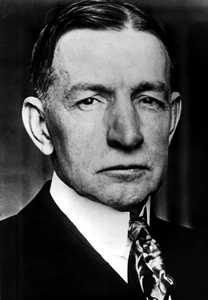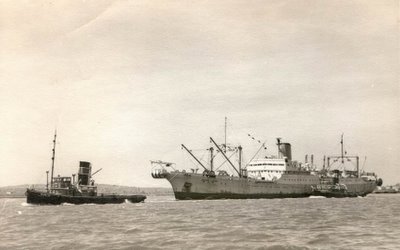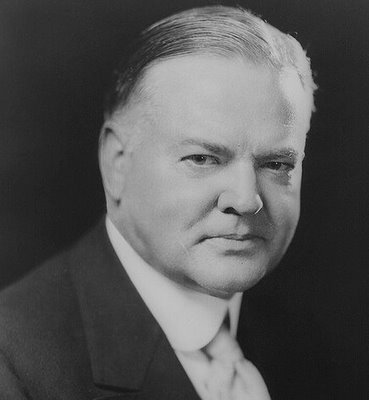
Review Part Two "Rusty Prizes": The European Economy 1914-2000 (Recovery/Instability) Derek H. Aldcroft (2002)
That the 1920's represented a difficult, partial, and particularist recovery process should be no great surprise considering the economic failure mechanisms which had been put in place; the peace treaties themselves made recovery basically impossible. It was a period of about seven years, or until 1925 according to Aldcroft, before spikey prewar levels of production could be reached.

Of most outstanding impediments to recovery, it is a paradox that Britain itself apparently provided the greatest examples of post-war economic reconstruction difficulties. This is particularly noteworthy, considering that Britain was not facing a widespread loss of economic plant or comparative population losses at all comparable to Germany, France, or Russia. Britain's stumbling blocks consisted of currency exchange difficulties, which implicated all European nations, some of the worst labour strikes in history, and a lack of capital financing on national or international borrowing capacities. The coffers were quite empty. Furthermore, Britain accented the rising regional issues of increases in European populations, but these without an accompanying strength of industrial development to provide meaningful employment.

All serious effects which may be attributed to nearly thirty years of war preparations and build-ups; also quite acute signs of future German economic spheres of influence in Hungary, Czechoslovakia, and Austria. During this period inflation, coupled to exchange depreciations at times encouraged investments and exports, of which German companies were in the forefront of capitalisation in Eastern/Central Europe. Aldcroft notes that the earliest solutions for these countries were based more on developing industrial capacities rather than increasing rates of output. However by the late 1920s most countries were well on the road to surpassing previous indices set prior to the war. In particular, France and Belgium. But all of this supposed recovery was obviously of greatest interest to the claw-like benefactors. And thus one must examine what Aldcroft has to say about war reparations in this regard.
Among twenty eight involved countries, the largest debtors were: Germany, France, Italy, and Belgium. Germany was possessed by eleven creditors, the UK represented seventeen debtors, France had ten to her name, all beholding and combined to sixteen US debtors. The total inter-Allied debts amounted to 26.5 billion in 1920s dollars, it would be beyond my scope to estimate what that value would be in today's dollars.

But let's look at a comparative price index on ocean liners. The Queen Mary Two recently cost 800 million dollars to set to float. The RMS Olympic cost (in 1911 dollars) US 7.5 million to weld together. An unadjusted for inflation dollar cost increase of 106.67 times repeating if one assumes perception of value would be as most luxurious, expensive boat afloat in comparative periods. I get a number on that war debt equalling 28.27 trillion dollars in a simple current comparison. Any economists out there wishing to torpedo such comparisons are welcome to do so, as long as they give me a real dinghy in return to place here. Please do. Welcome most welcome. On unadjusted values, read that India's GDP will amount to 28 trillion dollars, perhaps, in 2020 if all goes less chaotic. (http://www.iitk.ac.in/ime/MBA_IITK/avantgarde/Archive/economic.htm)
May it simply be a laymen's understanding then that the combined total of the First War debts were simply the largest whopping collection of debts ever amassed. For this there really requires no comparisons. Aldcroft discusses the appropriateness of expecting such debts to be repaid. Especially since Germany's economy was fairly moribund and flopsy during this entire recovery period, and every year of strict reparations dues implicated higher likelihood of spectacular default. The US is blamed for refusing to the mixing of the war debts and claims into unified, thus accountable streams. Think, "Oil for Food". Thus each creditor was obliged to serve the often hard to book octopus tentacles of various debtor associations and spare change collectors. There was a pickpocket with legitimate claims on every corner. And a Gulliver-like German economy appeared apparently tethered down among the houyhnhnms with fairly loose bindings.
By the late 1920s US banks lending policies were heavily curtailed, as their efforts to collect, as if one could really bleed wine from stones, US banks appeared to encourage their debtors to simply incur more debt, also to US bank benefits, in all joining in the fancily fronted attempt at seemingly successfully swallowing of their own slithery collective financial tails. Thus increasing proportions of large, suspiciously European liabilities in various trenches and tranches of short-term, thus immensely higher interests debt loads. These were simply less than innovative reinventions of the tying up of various clambering lizards in their own chameleon of utter financial ruin in Europe, and foreshadowing the dooms of immediate, depression inducing recalls. This completely avoidable process might have been forestalled according to one writer of anecdotal repute whose name, while I cannot recall it, would add little to his argument. What if every European nation had simply said no to reparations? His question. The financial crisis of 1929 according to Aldcroft was debtors' reparations being seemingly paid out for by further debtors' loans to diverse, scrambling, crowding creditors.

It seems in hindsight that had the reparations committees in the US been headed perhaps by any other character, other than the sloth-like decision-making procedural sponge-wringing policies of General Dawes the Nobel Prize for Peace might have been for a peace which lasted more than a dozen years. His military genius may be credited for extending loan payment plans in the early 1920's but also with the economic albatross of non-reduction of outstanding reparations. As a mind-boggling array of greedy creditors were pushing Germany for as much as they could get considering their victorious reparations obligations, these also played a significant role in forcing the German banking systems to further indebt themselves to US international lending agencies. All appeared filled with these arrangements for far too long. The only sane economist appears to have been Owen D. Young of the American camps who proposed capital demands be reduced. But even the best bankers often do not listen even to the sanest of economists. By 1931, Hoover appears to finally have decided to press the panic button in a proposed moratorium on reparations, but only for the penniless Germans, and not their own Allies. Of course by this time, the pyramidine racket had already pitched most of its finest speculators off of their own pinnacles, into depths provoked mostly by their own collective greedy choices.

The Germans themselves appear to have literally bled themselves dry in the process of serving the debt loads of their losses. German borrowings are drawn by Aldcroft as evidence of this, a total of 28 billion marks in loans from international lenders, as Germans had broken all of their piggies already. Of this total 10.3 billion marks were paid out into reparations. But where did the 17.7 billion marks remainder go? Thus the Germans appeared to have various ways of squirreling away a little for a rainy day, which was soon coming. Of course not before the events of 1929. But it is nice to get ahead of the story a little, as the Germans appear to have gotten ahead more than a little prior to the crash, which mandated borrowing and payments methods appear to have encouraged.

2 comments:
Sir,
I ll say this with all honesty, i tried to read most of wat you have written, but i cud not completely do the justice that ur writing deserves. You have pieced together so many details that if not for this chance stumbling, i would have been oblivious to so much knowledge.
Ur students must be lucky to have you..
Please go on...
You flatter me. To know and understand, read deeply of great authors as I am not among them.
This blog only represents glosses on my part to solidify in my writing those of which I have read.
And I have a great weakness for bringing humour to humourless subjects. Something academics appear unwilling at times to engrain within their texts.
That helps me to identify and give significance to information I find useful to know when so much is of a quality which could be compared to veneers and finishes rather than revealing any quality of knowing and understanding which I seek through reading.
Cheers, Daniel
Post a Comment